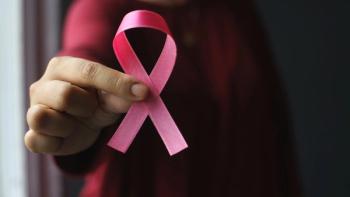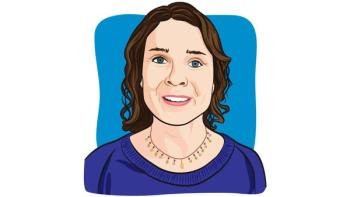
Rebounding for Lymphedema
Vertical motion helps stimulate the lymphatic system aiding in the disbursement of lymphatic fluid.
The challenge of living life with lymphedema is daunting. The swelling from pooling lymphatic fluid never completely disappears. At times, depending on various factors, it can lessen. There are many ways to help disperse the fluid, but it always returns, and for good reason. When the normal lymphatic flow in the body has been disrupted by the removal of lymph nodes, lymphatic fluid needs somewhere to go, and when it can’t travel, lymphedema sets in.
The lymphatic system is a huge network of tissues and organs that help rid the body of dangerous toxins. Its primary function is to transport lymphatic fluid throughout the body. The lymphatic fluid contains white blood cells specifically designed to fight infection. The easiest way to understand the lymphatic system is to think of a busy highway. I live in the Metro Atlanta area. The main interstate is I-285. During the day, this interstate is filled with hundreds of thousands of commuters. When traffic is flowing freely, it’s wonderful! Speeds in excess of 65 miles an hour allow travelers to reach their destinations quickly. But when there’s an accident, everything changes. Even a minor fender bender can wreak havoc on the traffic flow. Cars start to bottleneck and the flow is stymied. Travelers move forward at a snail’s pace, waiting for the problem to be corrected. As cars jump from lane to lane in an effort to sneak past the problem area, more accidents occur, and traffic can be at a standstill for hours. The lymphatic system is similar to a busy interstate. When there are no obstructions, the lymphatic fluid flows freely in one direction through the circulatory system of veins and capillaries. The lymphatic vessels are connected to lymph nodes, which help filter lymphatic fluid. Everything is designed to work perfectly. The tonsils, spleen, adenoids and thymus are all part of the lymphatic system. Throughout the body, there are hundreds of tiny lymph nodes. Just like a busy interstate, this system is set up to keep the lymphatic fluid moving. When a lymph node is removed, as it is in many cases of breast cancer, it causes a “traffic jam” in the flow of lymphatic fluid. Instead of moving easily throughout the system, the fluid builds up and collects in various areas of the body like the upper arm or legs. In my case, the fluid collects at my armpits just along and inside my chest wall.
Treatments for lymphedema vary. There are compression sleeves, manual lymphatic drainage, massage therapy, recirculating pumps and other temporary fixes. None of these types of treatment have worked well for me. In an effort to find a solution to the uncomfortable swelling in my body, I’ve tried just about everything. Today, as I was researching, I found an interesting study by Dave Scrivens, Certified Lymphologist, which was published in the Well Being Journal Vol. 17, No. 3. In his
Dr. Scrivens also says, “The lymphatic system is the metabolic garbage can of the body. It rids you of toxins such as dead and cancerous cells, nitrogenous wastes, infectious viruses, heavy metals, and other assorted junk cast off by the cells. The movement performed in rebounding provides the stimulus for a free-flowing system that drains away these potential poisons. Unlike the arterial system, the lymphatic system does not have its own pump. It has no heart muscle to move the fluid around through its lymph vessels. There are just three ways to activate the flow of lymph away from the tissues it serves and back into the main pulmonary circulation. Lymphatic flow requires muscular contraction from exercise and movement, gravitational pressure, and internal massage to the valves of lymph ducts. Rebounding supplies all three methods of removing waste products from the cells and from the body."
As I read about the beneficial effects of rebounding, it sounded like something I’d be interested in trying. I got online and began reading about various rebounders. I’d seen them before in many stores, and had even tried one. They are like mini trampolines. The only thing that bothered me about them was the small diameter and the noise from squeaking springs. As I continued looking, I found a rebounder manufactured by a company in Germany sold in the United States. This rebounder was very different from most I’d seen. The diameter of the rebounder’s top was much larger and sturdier. It also featured a type of bungee cording instead of the typical spring system used on other rebounders. According to the manufacturer, the bungee cording only needed to be replaced once every three years with normal use. I also liked the fact that this model supported more weight. Excited at the prospect of finding a remedy for my lymphedema, I ordered a rebounder. I was able to choose the color, size and weight limitations that best suited my needs. They also offered a stability bar to help those with limited balance.
A few weeks after I’d placed my order, my rebounder arrived. I watched the instructional video that came in the package and began to practice a little each day. I started out slowly and then tried to bounce a little more as I developed a rhythm. After a few days, I became more proficient in bouncing. I began to increase my exercise time. Rebounding was not only fun, I knew I was doing something to help my body. By gently bouncing up and down, I was using muscles to help stimulate my lymphatic system to move fluid through my body. I noticed a marked decrease in my upper arm area after having jumped for about 20 minutes each day. (While this type of activity might not be right for everyone, I would recommend those interested check with their medical team before beginning any type of exercise therapy).
In the movie "Fried Green Tomatoes" the character, Evelyn Couch, played by Kathy Bates, rebounds in one of the scenes. The song, “Stop in the Name of Love” plays in the background as she bounces to the beat. As she jumps, she seems to do so effortlessly. Rebounding doesn’t require special skills. Gently jumping in place on a rebounder is not stressful on the body. I was amazed at how much I enjoyed rebounding and looked forward to doing it every day. I may not jump as gracefully and as easily as Kathy Bates, but I’m in the comfort of my own home instead of in front of a camera crew. Heaven forbid, anyone see me while I’m working out!
Rebounding has been an excellent choice for me in combating lymphedema. After trying compression sleeves and the recirculating pump without much success, I’m happy to have found something that works well for me.
I purchased my rebounder here:




